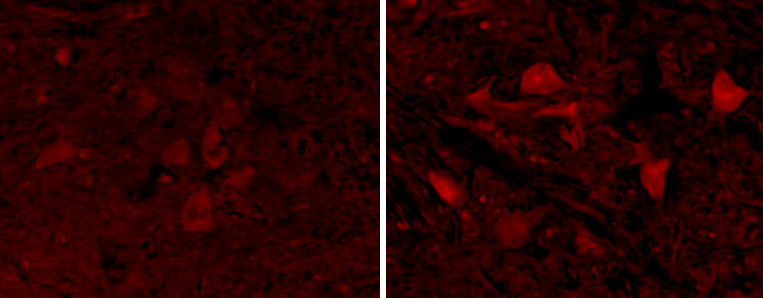UAlbany Professor Receives Funding to Advance ALS Research
ALBANY, N.Y. (June 27, 2023) — University at Albany’s Professor Li Niu, who is jointly affiliated with the Department of Chemistry and the RNA Institute in the College of Arts and Sciences, has been awarded $768,825 from the U.S. Department of Defense to support his research investigating new treatments for amyotrophic lateral sclerosis, the neurological disease more commonly known as ALS.

The proposed work will build on his lab’s existing research in this area, with a focus on testing RNA aptamers designed to block excessive activity of glutamate receptors, which causes cell death in the spinal cord and brain. The team hopes that their findings will help inform a new and an effective approach to ALS treatment.
“ALS, also known as Lou Gehrig’s Disease, is a fatal neurodegenerative disease that slowly robs patients of their ability to walk, talk, move and even breathe independently,” said Niu. “Approximately 90 percent of ALS cases are sporadic, meaning that they have no known family history, while 10 percent are familial cases due to hereditary genetic mutations. The two ALS mouse models my lab is working on cover both sporadic and familial ALS animal models.”
“Because the hallmark of the disease is the death of motor neurons in the spinal cord and lower brain stem, the hope for more effective treatment, or even a cure, depends on finding a way to halt the death of those motor neurons — something that our lab has been working on for more than a decade with encouraging results.”
Niu’s team is focusing on a group of proteins called glutamate receptors, which are uniquely expressed in the brain and spinal cord. When these glutamate receptors become abnormally active, as happens in ALS, this excessive receptor activity causes cell death.

In previous and ongoing studies funded by NIH grants, Niu’s lab has already tested several RNA aptamers that have proven effective in stopping motor neuron cell death and rescuing dying neurons (see figure) in mice modeling sporadic ALS. The animals involved in this NIH funded work have exhibited improved motor function following the aptamer treatment.
With this new grant, Niu’s team will test these aptamers in mice that carry a human genetic mutation found in familial ALS.
“For many years, our lab has worked to identify these special RNA molecules or RNA aptamers from a large RNA library and test them in cells that express glutamate receptors using electrophysiological techniques,” said Niu. “This new funding will allow us to extend our work to test these RNA aptamers in a familial ALS animal model.
“If we can demonstrate that these RNA molecules are effective in preventing motor neuron death without inducing significant side effects in these ALS animal models, we hope to next bring these RNA molecules to a clinical trial. I am optimistic that our research could make a positive impact on patients suffering from ALS.”




